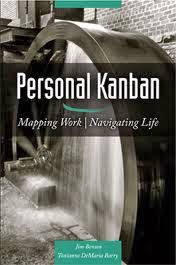Later today I'll be giving my Personal Agility Canvas presentation for the PMI Agile Community of Practice. In this webinar (like the one I did recently on Redefining your PMO to Support Agile) I'll be referencing Sun Tzu's The Art of War. There are literally hundreds of translations of this classic text. IMHO, the best way to really understand the ideas and tools introduced in the book is to read a number of different translations. After the last session I had a number of requests for which versions of the book I recommend for those who are new to it, so I though I would post them here to save some time.
The Art of War (Pocket Edition) - Thomas Cleary
This is a great starting point. Cleary offers a simple translation that is easy to get through if this is your first time with the text or if you've had trouble with it in the past. He has larger versions that go into more detail and offer more commentary, but this is still my favorite - plus, it's smaller than an iPhone and you can carry it with you everywhere.
The Art of Strategy - R.L. Wing
R.L. Wing introduces each chapter with an explanation that looks at the meaning behind the text on three different levels : Conflict with the Self, Conflict with the Environment and Conflict with Others. For me, this helped open up the way I interpret and use the tools that are presented throughout the text.
Sun Tzu's The Art of War Plus It's Amazing Secrets - Gary Gagliardi
Gary Gagliardi's way of diagramming the tools and explaining how they fit into interaction with others is brilliant and his explanation of the Five Measures is what helped me understand how to apply it in everyday life. I would not start with this one, but if you have a decent grasp of the ideas, this is a must for understanding how to apply The Art of War.
The Art of War (Pocket Edition) - Thomas Cleary
This is a great starting point. Cleary offers a simple translation that is easy to get through if this is your first time with the text or if you've had trouble with it in the past. He has larger versions that go into more detail and offer more commentary, but this is still my favorite - plus, it's smaller than an iPhone and you can carry it with you everywhere.
The Art of Strategy - R.L. Wing
R.L. Wing introduces each chapter with an explanation that looks at the meaning behind the text on three different levels : Conflict with the Self, Conflict with the Environment and Conflict with Others. For me, this helped open up the way I interpret and use the tools that are presented throughout the text.
Sun Tzu's The Art of War Plus It's Amazing Secrets - Gary Gagliardi
Gary Gagliardi's way of diagramming the tools and explaining how they fit into interaction with others is brilliant and his explanation of the Five Measures is what helped me understand how to apply it in everyday life. I would not start with this one, but if you have a decent grasp of the ideas, this is a must for understanding how to apply The Art of War.




























